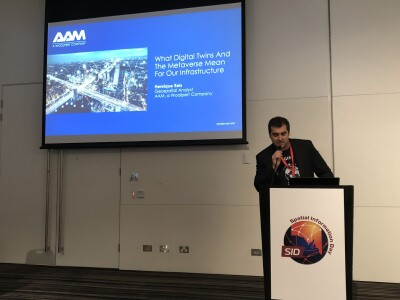Across Australia and globally, different governments are starting to embrace user-centric digitization. The goal is to securely share, reuse, and enhance real-time data to create consistency across jurisdictions and promote better interoperability.
Interoperability becomes powerful when using data alongside technologies to deliver digital solutions to improve the lives of Australians. This includes projects to drive smarter services and drive better results with digital actions through data that gives citizens confidence.
With the expansion of the market, the internet and increasing urbanization create ever-increasing complexity and represent an opportunity to deliver innovative public policy outcomes by better leveraging the potential of data insights. To explore analytics frameworks and access controls to enable secure, timely and simple access to data while protecting community privacy to map opportunities, share insights and build assets.
In view of this improvement through digitization, it helps to guide decision-makers in the public service on the approach in the Information and Communication Technology sector for action plans to deliver good policies.
Victorian government application programming interface (API)
Victoria aims to create a core infrastructure that presents an approach to data sharing in the government's public service application programming interface (API) innovation. Enabling applications in their various functionalities to exchange data easily and securely with open integrity to the Victorian government and community. In August, the Victorian Government launched the Digital Twin Victoria (DTV) platform, an effort to create a digital and data-driven replica of the state.
The Victorian government promotes an API-first approach whereby any new digital services and exposed data must be created using APIs. So, all Victorian Government online services provide API access where possible.
Through Service Victoria, more and more services are going fully end-to-end digital, giving citizens the option to transact with the government from the comfort and safety of their own homes. Victoria will be the first Australian state to support diverse data on the path to a digital nation.
In view of this action, Victoria aims to increase the sustainability of government infrastructure and the ability to share information based on real-time, secure and up-to-date data. Lowering the cost of government doing business by automating manual data manipulation processes. The portal provides Victorian government data integrity to access a library of APIs.
Victorian ICT Network use of information communications technologies
Information and Communications Technology (ICT) aims to make Victoria a great place to be and achieve social and economic outcomes for the Victorian community. Opportunities that tangent to allow economic opportunities in building green spaces that expand community services, housing, and education opportunities to achieve outcomes that create more value for the community.
A flexible and dynamic environment of modern ICT offers open data management system information for sharing government data with digital services on cloud-based systems. Government ICT has to provide easy-to-use systems for the establishment to achieve specific results, driven by better use of data for transparent public utility sector functioning. Improved planning processes to deliver integrated and customized services aligned the strategies for integration between the physical and digital world.
Using Cloud Computing Analytics coordinated with social media to bring together a diverse set of stakeholders to rapidly prototype and scale the new customer focus. Fostering a culture of innovation with interactive multimedia system tools, mobile wireless networking to collaborate, communicate, and connect with each other.
Interconnected immersive experiences to develop solutions
Victorian businesses and entrepreneurs should have the opportunity to create value from data the government's approach to managing information and data. Innovation is created through partnership with the community in data sharing is a catalyst for collaboration and cooperation between the community and government.
It is an opportunity to bring citizens and government together to apply their creative skills to open government data. Encouraging new digital platforms to support open data initiatives to leverage tools driven by web services enabled by the application programming interface (API).
Considering facilitating online consultation, the Government of Victoria aims to gain better insights through a platform-based approach to consulting and collaborating more widely. Allowing all Victorians, the opportunity to share their views on important topics.
Integrated asset information enables solutions
Digital representations of the real world have emerged as a powerful tool to better leverage data to understand our physical environment. With high-quality, data-rich advanced visualization for analysis, modelling, and simulation. The potential in data collection in the face of the advancement of the Internet of Things (IoT) sensor, will generate economic benefits through digital twins.
Developing a copy of the real world in real-time management to analyse and model future scenarios, smart cities in the automation context of the “Fourth Industrial Revolution”. A variety of technologies are enabling this, including AI, IoT, autonomous vehicles and fifth-generation (5G) wireless technologies. Digital twins have their potential improved if we relate them to one another and position them as they are in the real world.
Digital twins provide access to historical and current data power enabling enhanced insights and better, more efficient decisions. Digital Twins facilitate the understanding of different possibilities for improving assets for better, more sustainable management to maximize efficiency.
Digital Twins operational data flow efficiency
Digital Twins being monitored in real-time through data collected through IoT sensors, it obtains insights and is integrated to optimize energy demand and connection networks, allowing automated monitoring. Thus, planning resources and logistics efficiently, safely and ensuring quality and compliance.
Alignment of spatial data for coordination purposes with precise positioning in 3D reality model for visualization. Efficiency by integrating the asset management suite with real-time data-based decision monitors to improve decision-making. Enriching the implementation in two-way data integration and interaction in automated operation.
The Digital Twin environment provides interoperable access to the secure combination of data that is opened or shared with approved users. Spatial data is a key enabler for data integration in the digital twin ecosystem, providing the common good: location information to link, position different data, and their relationships to each other.
This governmental and non-governmental integration of data increases possibilities for adapting to user needs. Localized information for a given region or city to connect digital twins that drive innovation in the simulation and modelling of the entire infrastructure, assuming greater importance in the face of the great challenges of the high growth of urbanization.
Conclusion
Digital twins are an important resource for the Australian economy that must be openly available to develop new and improved products to deliver better services to citizens. On the way to providing a public good, being an important resource for the Victorian economy with open and well-structured shared spaces will promote an environment of collaboration and innovation throughout the economy.
Digital Twins Victoria aims to provide ongoing value consistent well-being public principle. The benefits will result in greater productivity, particularly in large cities and regional centres to facilitate improved infrastructure performance, both as a system and as a service. Australia will be maximized by integrating data, including spatial data, from different sectors to provide holistic insights.
 About the author: Henrique Reis is an admirer of actions that follow the speed of digital transformations in society that integrate public and private initiatives to act more together in collaboration to make cities smart and good for those who live in them.
About the author: Henrique Reis is an admirer of actions that follow the speed of digital transformations in society that integrate public and private initiatives to act more together in collaboration to make cities smart and good for those who live in them.






